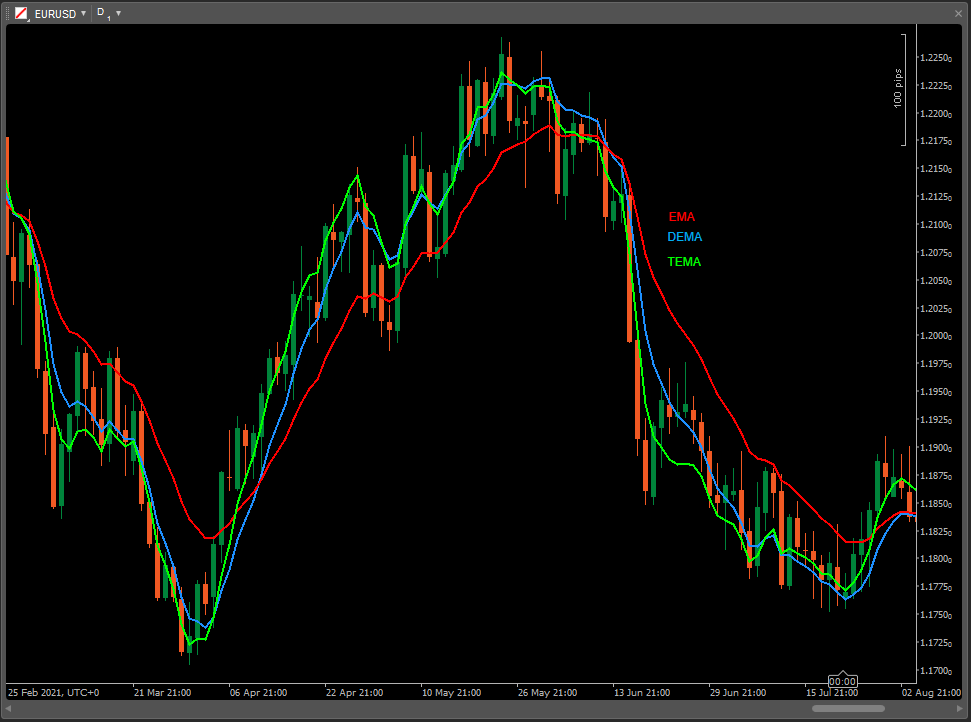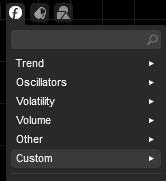Description
The Triple Exponential Moving Average (TEMA) reduces the lag of traditional EMAs, making it more responsive and better-suited for short-term trading. Shortly after developing the Double Exponential Moving Average (DEMA) in 1994, Patrick Mulloy took the concept a step further and created the Triple Exponential Moving Average (TEMA).
Like its predecessor DEMA, the TEMA overlay uses the lag difference between different EMAs to adjust a traditional EMA. However, TEMA's formula uses a triple-smoothed EMA in addition to the single- and double-smoothed EMAs employed in the formula for DEMA. The offset created using these three EMAs produces a moving average that stays even closer to the price bars than DEMA.

Github: GitHub - Doustzadeh/cTrader-Indicator
using cAlgo.API;
using cAlgo.API.Indicators;
namespace cAlgo
{
[Indicator(IsOverlay = true, AutoRescale = false, AccessRights = AccessRights.None)]
public class TripleExponentialMovingAverage : Indicator
{
// Single-, Double-, and Triple-Smoothed EMAs:
// EMA1 = EMA of price
// EMA2 = EMA of EMA1
// EMA3 = EMA of EMA2
// TEMA = (3 x EMA1) - (3 x EMA2) + (EMA3)
[Parameter("Source")]
public DataSeries Source { get; set; }
[Parameter("Periods", DefaultValue = 14)]
public int Periods { get; set; }
[Output("TEMA", LineColor = "DodgerBlue", Thickness = 2)]
public IndicatorDataSeries TEMA { get; set; }
private ExponentialMovingAverage EMA1, EMA2, EMA3;
protected override void Initialize()
{
EMA1 = Indicators.ExponentialMovingAverage(Source, Periods);
EMA2 = Indicators.ExponentialMovingAverage(EMA1.Result, Periods);
EMA3 = Indicators.ExponentialMovingAverage(EMA2.Result, Periods);
}
public override void Calculate(int index)
{
TEMA[index] = (3 * EMA1.Result[index]) - (3 * EMA2.Result[index]) + EMA3.Result[index];
}
}
}
Doustzadeh
Joined on 20.03.2016
- Distribution: Free
- Language: C#
- Trading platform: cTrader Automate
- File name: Triple Exponential Moving Average.algo
- Rating: 0
- Installs: 1713
- Modified: 04/12/2021 00:00
